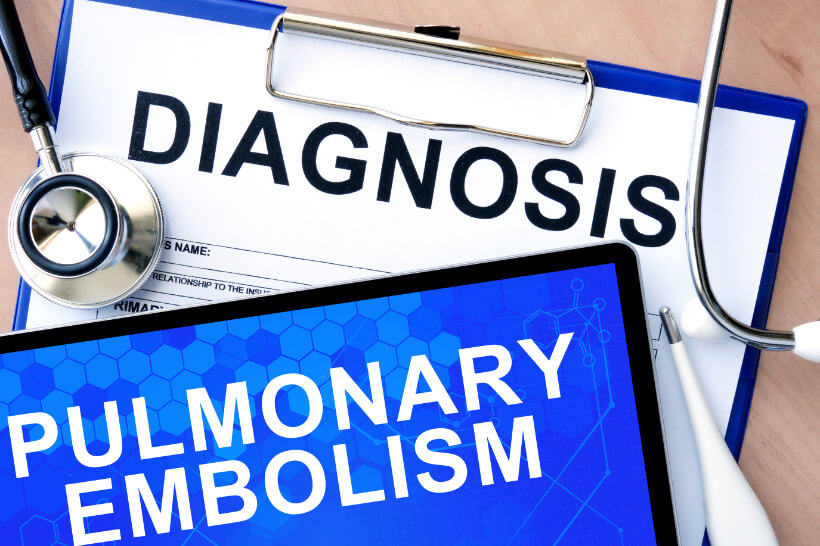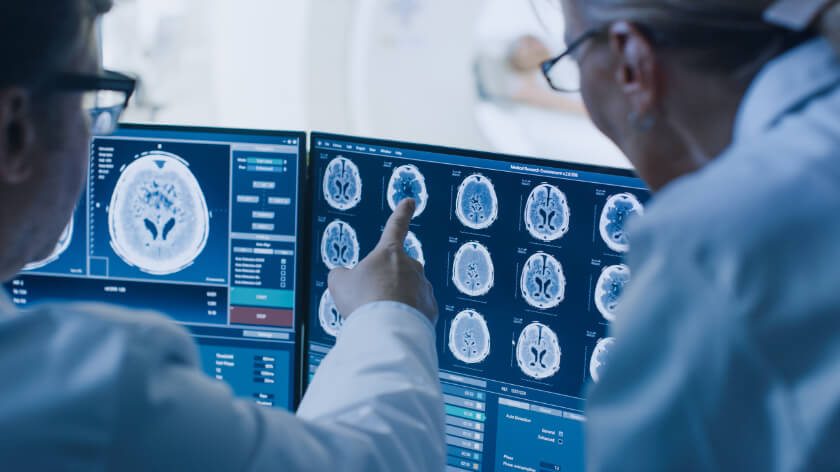
What is a Lung Nodule?

A lung nodule is an abnormal growth that forms in a lung. Also known as a pulmonary nodule, lung nodules are common. While they are usually benign, or not cancerous, pulmonary nodules may be a sign of lung cancer in some cases. Your doctor and radiologist use various imaging techniques to detect, measure, and help assess lung nodules.
Doctors often see lung nodules when performing chest x-rays or computed tomography (CT) scans for other reasons; they refer to this as an “incidental finding.” In fact, doctors spot lung nodules on up to half of all adults who have a chest x-ray or CT scan. A patient may have one or more nodules in one lung or in both.
These nodules can be large or small. Most lung nodules measure less than 10 centimeters (cm), which is about ½ inch or about the size of an oat cereal. Your doctor can use the x-ray or CT scan images to measure the nodule.
Lung Nodule Symptoms
In most cases, small lung nodules do not cause pain or other symptoms. When pulmonary nodules do cause symptoms, the symptoms typically include:
- Coughing
- Coughing up blood
- Shortness of breath
- Wheezing
- Respiratory infection
What causes a lung nodule?
Pulmonary nodules usually develop as the result of an infection or inflamed lung tissue, known as granulomas, or benign lung tumors.
Malignant, or cancerous, lung nodules are less common. When they do occur, they usually develop as the result of lung cancer or other cancers that have spread to the lungs. Doctors refer to cancer that has spread as “metastatic cancer.”
Other causes of lung nodules may include:
Infections – during an infection, immune cells surround and isolate the bacteria, fungus, or parasite causing the infection
Inflammation – inflammation from certain conditions, such as rheumatoid arthritis and sarcoidosis, can cause the formation of granulomas
Diagnosis of Lung Nodules
Once your doctor or radiologist has identified a lung nodule on a chest x-ray or CT scan, they may refer you to a pulmonologist, who is a doctor that specializes in diagnosing and treating lung diseases. Your pulmonologist can assess the nodule to determine if it is a cause for concern.
Evaluation for a lung nodule includes a thorough review of your medical history, symptoms, and family history. The pulmonologist will perform a physical exam and listen to your lungs. If your doctor had found the nodule or nodules on a chest x-ray, your pulmonologist will likely order a CT scan, which creates a more detailed, 3-dimensional image of your lungs. These imaging tests can help your doctor determine the size, shape, and location of the lung nodules. The tests also help doctors learn any other characteristics of the nodules, such whether or not they are calcium deposits associated with granulomas.
The pulmonologist may recommend additional tests to rule out cancer or to otherwise determine the underlying cause of your lung nodules. These can include:
Bronchoscopy – a procedure in which the pulmonologist passes a thin, flexible tube through your nose or mouth to the nodule; the doctor can attach a small camera or other tools to the tube
Biopsy – a procedure in which your doctor removes a small amount of tissue from the nodule for examination under a microscope; your doctor can collect a biopsy during a bronchoscopy
Other tests – Your doctor may order blood tests or other diagnostic testing to rule out tuberculosis or other conditions affecting the lungs
Complications of Lung Nodules
In rare cases, lung nodules can press against an airway or block it to interfere with breathing. In these cases, a doctor may recommend surgery to clear the airway and make it easier for you to breathe.
Treatment for Lung Nodules
Treatment for lung nodules depends largely on their underlying cause. Small, non-cancerous nodules do not usually require treatment. Treatment for nodules that develop as the result of infection will likely include antibiotics or antifungal medications.
Nodules that grow or are cancerous may require surgery. Surgical procedures to remove these nodules may include:
Video-assisted thoracic surgery (VATS)
During this procedure, your surgeon will insert a thoracoscope, which is a scope equipped with a camera, and tiny surgical instruments through several small incisions in the chest. The camera helps guide the removal of the nodule.
Thoracotomy
The surgeon removes the nodule through a larger incision in the ribs, just below the shoulder blade.
Prevention and Prognosis of Lung Nodules
Quitting smoking – or never starting – can reduce your risk for lung nodules. Otherwise, there is no way to prevent pulmonary nodules from developing. Since most lung nodules are not cancerous, the outlook for people who have them is good.
For more information about lung nodules, consult with your doctor or radiologist.





